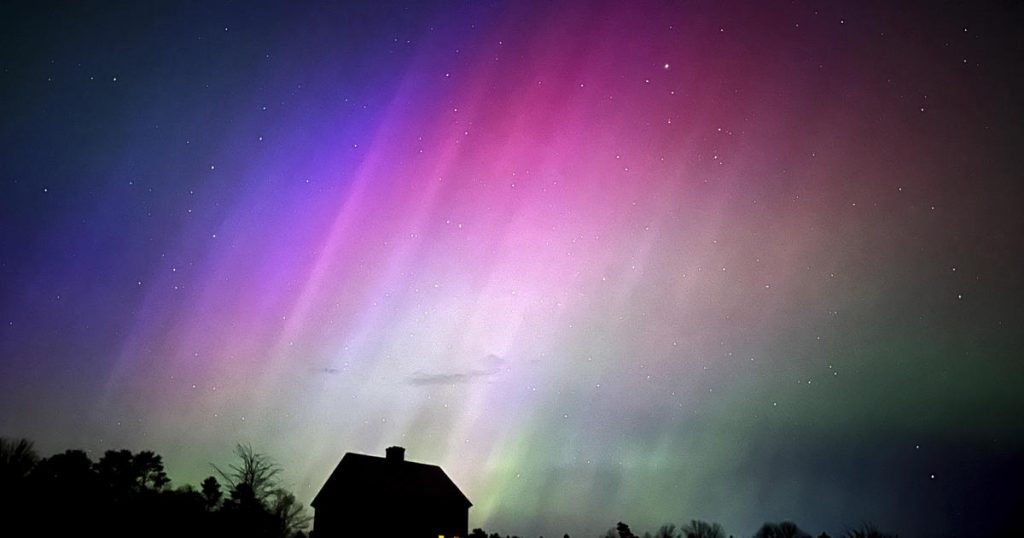A series of powerful solar storms colored skies across the Northern Hemisphere this weekend, as people witnessed brilliant displays of the northern lights in the United States, Canada, Europe, China, and beyond. The aurora borealis, or northern lights, occur due to molecular collisions in the upper levels of Earth’s atmosphere, releasing bursts of energy in the form of visible light. While these displays are more common near the poles, they can occasionally be seen in areas closer to the equator during periods of intense space weather activity. The recent geomagnetic storm was historic, reaching a G5 level, the highest ranking on the scale, according to the National Oceanic and Atmospheric Administration.
The solar storm that sparked this dazzling display of northern lights has not interacted with Earth on this scale in decades. The storm was accompanied by coronal mass ejections from the Sun’s corona, which continued fueling the aurora borealis shows over Friday and Saturday. The next bursts of solar material are expected to reach Earth midday on Sunday, with the Space Weather Prediction Center issuing a geomagnetic storm watch in anticipation of more G4 or G5 events. These watches are very rare and could potentially cause the aurora to be visible over a significant portion of the northern United States.
In anticipation of further solar flares, some brilliant auroras were captured in various parts of the world over the weekend. Images show the northern lights filling the sky in locations such as Idaho, Missouri, Michigan, Maine, Oregon, Texas, Washington, British Columbia, Great Britain, Poland, Russia, and China. The stunning light shows were a treat for skywatchers across the globe and will likely continue for several more days as the solar storms persist. These displays of the northern lights were a rare and memorable event, providing an opportunity for people to witness nature’s beauty and wonder.
The aurora borealis and its southern counterpart, the aurora australis, are natural phenomena that occur due to solar wind disturbances interacting with Earth’s magnetic field. When these disturbances reach Earth, they can cause geomagnetic storms that result in visible light shows in the sky. The recent G5 geomagnetic storm that hit Earth over the weekend provided spectacular views of the northern lights in regions not typically known for such displays, such as parts of the United States and Europe. Skywatchers took advantage of this rare opportunity to witness the aurora borealis and capture stunning images of the colorful displays.


